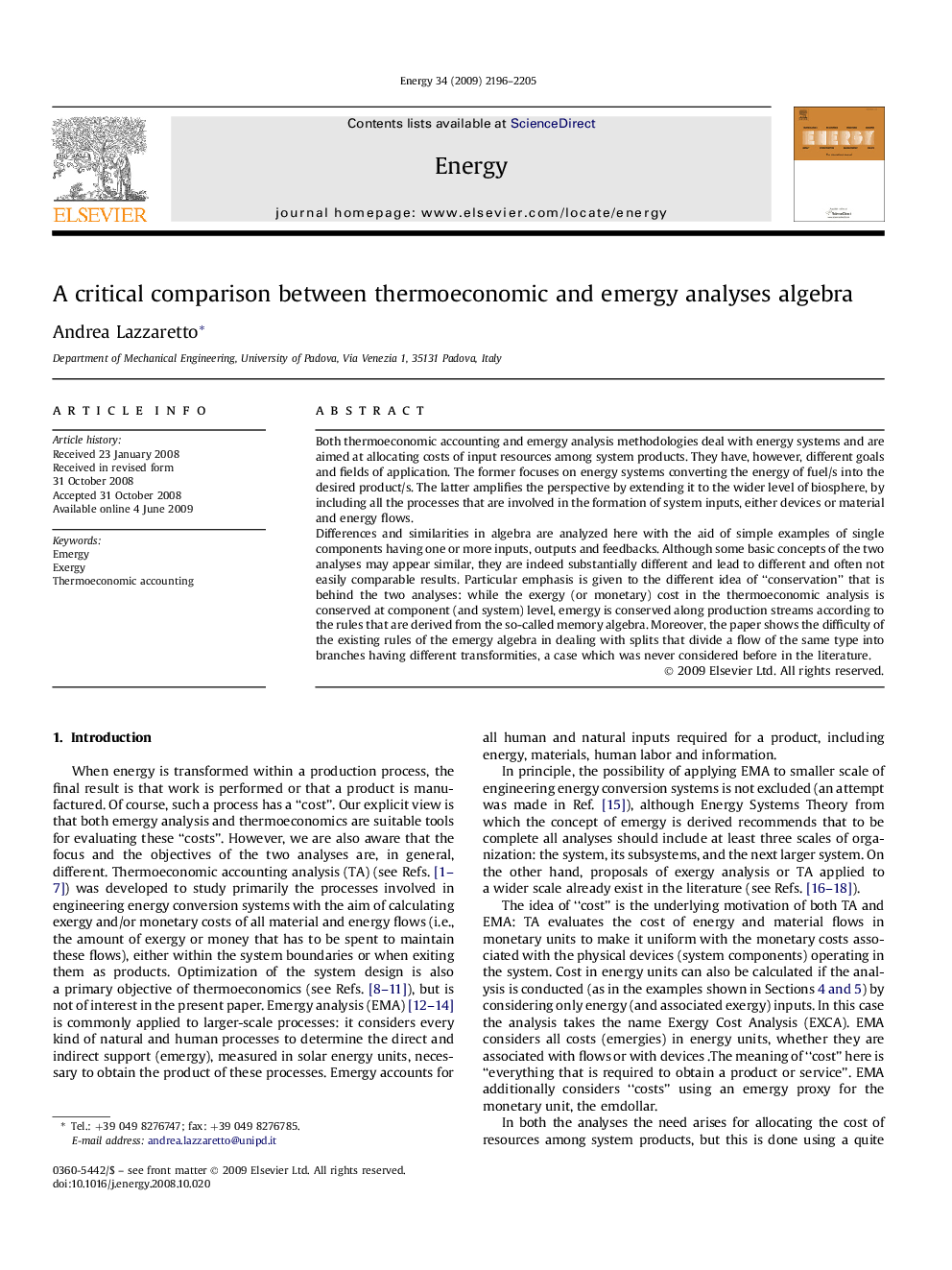| Article ID | Journal | Published Year | Pages | File Type |
|---|---|---|---|---|
| 1734139 | Energy | 2009 | 10 Pages |
Both thermoeconomic accounting and emergy analysis methodologies deal with energy systems and are aimed at allocating costs of input resources among system products. They have, however, different goals and fields of application. The former focuses on energy systems converting the energy of fuel/s into the desired product/s. The latter amplifies the perspective by extending it to the wider level of biosphere, by including all the processes that are involved in the formation of system inputs, either devices or material and energy flows.Differences and similarities in algebra are analyzed here with the aid of simple examples of single components having one or more inputs, outputs and feedbacks. Although some basic concepts of the two analyses may appear similar, they are indeed substantially different and lead to different and often not easily comparable results. Particular emphasis is given to the different idea of “conservation” that is behind the two analyses: while the exergy (or monetary) cost in the thermoeconomic analysis is conserved at component (and system) level, emergy is conserved along production streams according to the rules that are derived from the so-called memory algebra. Moreover, the paper shows the difficulty of the existing rules of the emergy algebra in dealing with splits that divide a flow of the same type into branches having different transformities, a case which was never considered before in the literature.
